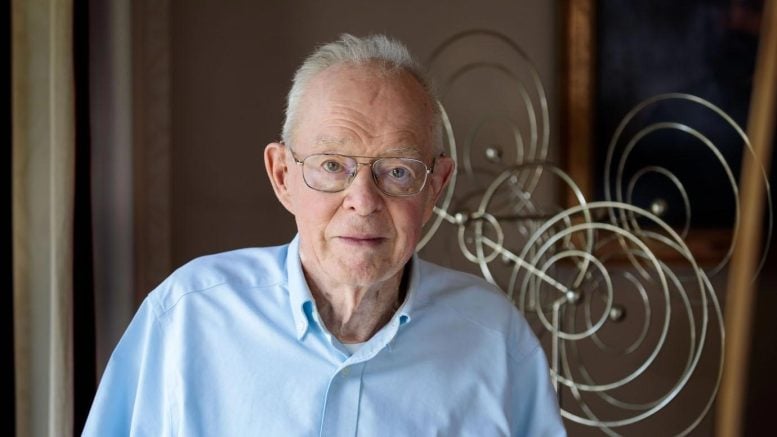
Prof. Emeritus Eugene N. Parker, a pioneering astrophysicist whose contributions to solar physics were so enormous that NASA named its Parker Solar Probe mission after him, died March 15. He was 94.
Parker was internationally known for proposing the concept of the solar wind—an idea that was first met with skepticism to outright ridicule. The theory was later proven to be correct, reshaping our picture of space and the solar system. Parker went on to revolutionize the field of astrophysics, unraveling the complex physics behind magnetic fields in space and the dynamics of plasma.
In August 2018, at the age of 91, he became the first person to witness the launch of their namesake spacecraft.
That same year, Parker was asked about the advice he would give to early-career scientists.
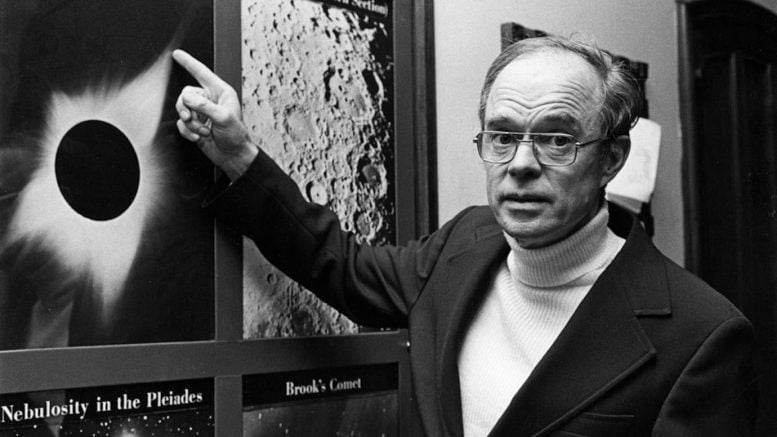
“I have never made a significant proposal but what there was a crowd who said, ‘Ain’t so, can’t possibly be,’” Parker responded. “If you do something new or innovative, expect trouble. But think critically about it because if you’re wrong, you want to be the first one to know that.”
“I don’t think it is in any way an overstatement to say that the field of heliophysics exists today largely because of the work of Dr. Eugene Parker,” said Nicky Fox, director of NASA’s Heliophysics Division at NASA Headquarters in Washington and a friend of Parker’s. “Even though Dr. Parker is no longer with us, his discoveries and legacy will live forever.”
Prof. Eugene Parker discusses his scientific research on the sun, including his landmark discovery of the solar wind. Credit: Video by UChicago Creative
‘Utter nonsense’
Born in 1927 in Houghton, Michigan, Parker completed his undergraduate degree in physics from Michigan State University in 1948 and his Ph.D. from Caltech in 1951. He spent time as an instructor and assistant professor at the University of Utah before accepting a position in 1955 at the University of Chicago, where he remained for the rest of his career.
In 1957, Parker was a young assistant professor when he turned his attention to the temperature of the corona of the sun. Running through the math, he determined the conditions should produce a supersonic flow of particles off the sun’s surface.
The idea was roundly criticized. “The first reviewer on the paper said, ‘Well I would suggest that Parker go to the library and read up on the subject before he tries to write a paper about it, because this is utter nonsense,’” Parker told UChicago News in 2018.
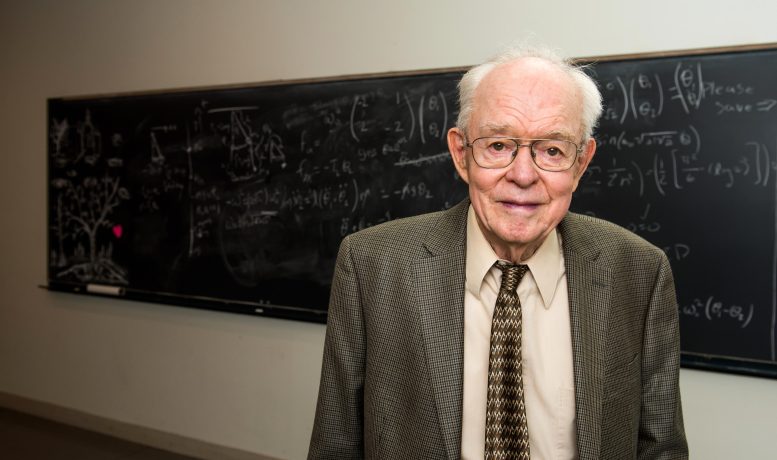
The paper might not have been published but for Parker’s colleague at the University, Subrahmanyan Chandrasekhar. The editor of the journal and a future Nobel laureate, Chandrasekhar didn’t like the idea either—but he couldn’t find a flaw with Parker’s math, so he overrode the reviewers and published the paper.
Shortly afterward, in 1962, NASA’s Mariner II spacecraft flew to Venus and encountered a constant stream of particles. This flow, called the solar wind, turned out to be incredibly influential on the workings of the solar system, including our lives on Earth. It blankets the planets, protecting us from harmful radiation—but also occasionally disrupting our communications, in the case of solar flares.
“Gene Parker was a legendary figure in our field—his vision of the sun and the solar system was way ahead of his time,” said Angela Olinto, the Albert A. Michelson Distinguished Service Professor of Astronomy and Astrophysics and dean of the Physical Sciences Division at the University of Chicago. “It is only fitting that Gene’s name is quite literally written in our star, the sun, and in the physics that describe stars.”
Over his career, Parker also went on to study cosmic rays and the magnetic fields of galaxies, among many other related topics. His seminal ideas include the origin of magnetic fields, known as dynamo theory; rapid dissipation of magnetic fields; the structure of magnetized shock waves; and the diffusion of high-energy cosmic rays.
“It is only fitting that Gene’s name is quite literally written in our star.”
Angela Olinto, dean of the Physical Sciences Division
His name is littered across astrophysics: the Parker instability, which describes magnetic fields in galaxies; the Parker equation, which describes particles moving through plasmas; the Sweet-Parker model of magnetic fields in plasmas; and the Parker limit on the flux of magnetic monopoles.
“The University and the department has lost one of its giants,” said Michael Turner, the Bruce V. and Diana M. Rauner Distinguished Service Professor Emeritus of Astronomy and Astrophysics at UChicago and a colleague of Parker’s for decades. “Gene changed the course of science with his work on magnetic fields literally everywhere in the cosmos, but he remained humble and approachable, with a wry sense of humor.
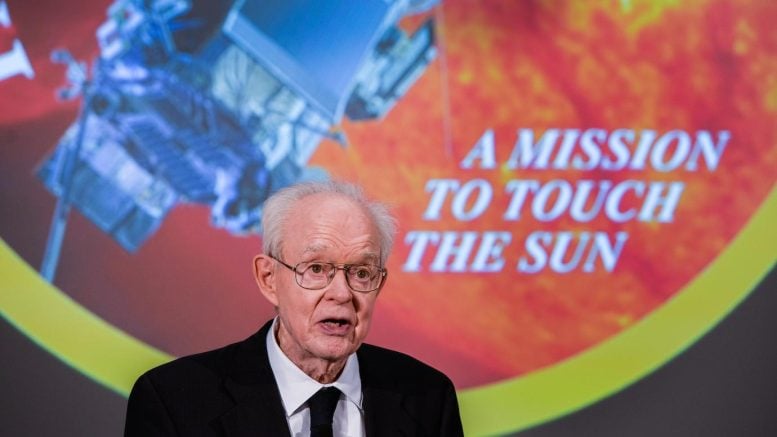
“He ranked up there with Stephen Hawking in his ability to express the gist of an issue, scientific or otherwise, in a few clear sentences.”
Parker twice served as chair of the Department of Astronomy and Astrophysics, and also served as chair of the astronomy section of the National Academy of Sciences.
Prof. Eugene Parker and his family watch the launch of the Parker Solar Probe on August 12 from Cape Canaveral, Florida. Credit: Video by UChicago Creative, photo by Glenn Benson/NASA
“Gene represented to me the ideal physicist—brilliant and accomplished, personable, articulate, but also humble,” said Robert Rosner, the William E. Wrather Distinguished Service Professor of Astronomy and Astrophysics and a longtime colleague. “I will never forget the pleasure he took in exploring a science problem, and his terrific physical insights which were then buttressed by his analytical skills. And one can never forget the encouragement he gave to everyone he interacted with—his own students and postdocs, and his colleagues. His passing indeed marks a great loss for us all.”
He retired from the University in 1995 but remained active in the field, publishing articles and books.
In 2017, NASA announced that it was naming its landmark solar mission after Parker as a recognition of his contributions to the field of heliophysics.
“It was so exciting to have the honor of taking Gene into the cleanroom at the Applied Physics Lab to introduce him to “his” spacecraft—and of course I said “Parker, meet Parker,” said Fox.
“The way his eyes lit up at every new image or data plot—that was the true Gene, always striving to learn more about our universe.”
Nicky Fox, director of NASA’s Heliophysics Division
On the morning of August 12, 2018, Parker was at Cape Canaveral with three generations of his family to witness the launch of his namesake Parker Solar Probe, which has since completed multiple revolutions around the sun and collected extraordinary data.
“The continued joy that Gene showed every time I shared new results from the mission with him—the way his eyes lit up at every new image or data plot—that was the true Gene, always striving to learn more about our universe,” Fox said.
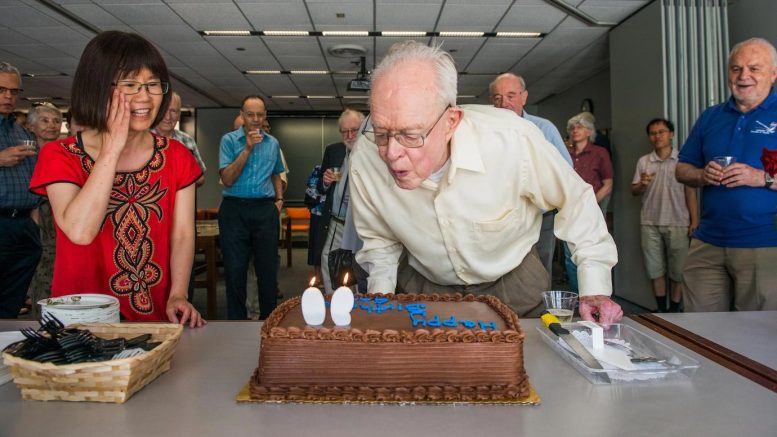
Among Parker’s many awards are the U.S. National Medal of Science, the Kyoto Prize, the Crafoord Prize, the American Physical Society Medal for Exceptional Achievement in Research and its James Clerk Maxwell Prize. He was elected to the National Academy of Sciences, and was a fellow of the American Physical Society and a Legacy Fellow of the American Astronomical Society.
He authored four books: Interplanetary Dynamical Processes (1963), Cosmical Magnetic Fields: Their Origin and Their Activity (1979), Spontaneous Current Sheets in Magnetic Fields, with Applications to Stellar X-rays (1994), and Conversations on Electric and Magnetic Fields in the Cosmos (2007).
“We are devastated by the loss of my father, but we know his legacy spans not only our family and friends, but the international community of scientists around the globe,” said his son Eric Parker. “We extend our gratitude to everyone who has reached out with memories, for his colleagues over the years who worked with him to explore a subject which gave him much joy, and for the many people at NASA and the Applied Physics Laboratory who welcomed my father and gave him a profound gift—the chance to see the launch of the Parker Solar Probe, which moved him deeply.”
Parker was invited to attend a ceremony in Sweden next month to celebrate the Crafoord Prize, which he won in 2020. His family plans to attend the ceremony on Parker’s behalf.
Parker is survived by his wife Niesje, to whom he was married for 67 years, as well as brother Phillip; son Eric Glenn Parker (married to Susan) and daughter Joyce Marie Parker (married to Ed); grandchildren Owen Loh (married to Allison), Miles Loh (married to Michelle), and Nolan Loh (fiancée Hillary Wang); and great-grandchildren Lena and Elliott.
For more on the life and death of Eugene N. Parker, see NASA Mourns Passing of Visionary Heliophysicist Eugene Parker.